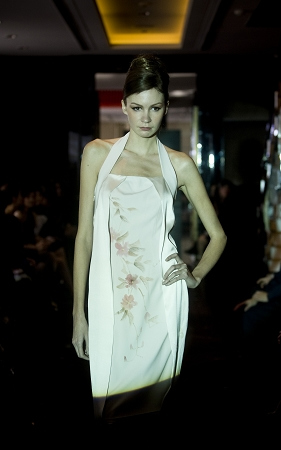Loading on the Bund Peninsula Hotel in Hand-painted Haute Couture Shanghai
Yesterday, Shanghai's Haute Couture Fashion “Tang Yun-Red Embroidery†officially entered the Peninsula on the Bund. This is also the only Chinese brand accepted by the hotel after entering more than 20 international famous brands. "Tang Yun - Red Embroidery" as a local high fashion custom brand, in the Bund Peninsula Hotel, while the new spring and summer of 2010 also released. The new season of the new name is called: "Colorful Tianxiang." Following the consistent design thinking of "Tang Yun-Red Embroidery", the creative skeleton of the "China-color Tianxiang" series still consists of Chinese cultural elements. The “Guo Tian Tian Xiang†series uses high-grade silk, damask and other fabrics. The portrait artist works directly with hand-painted, special pigments and follows the ancient silk hand-painted tradition. The reason why fabrics choose to use high-grade silk, brocade, etc., is mainly to emphasize the elegant and agile style of the new season's works. When painting on clothing, the painter uses the writing brush as a tool, according to traditional techniques, he first takes the light ink to compose the artwork, then sets the colors, and finally paints with various colors of pigments. Guosian Tianxiang series is a series of beautiful flower coloring and painting by the painter. After that, the white, brown, black and other colors or mud and gold are used to outline the petals and veins. In addition to the use of ancient hand-painting techniques, the handmade embroidery style of "Guoxiang Tianxiang" will still be preserved, and the embroidered mother will use the most ancient techniques for embroidery. In fact, the Chinese silk that was imported into Europe in the 17th to 18th centuries was not high-end fabrics such as silk brocades, but more hand-painted silk and embroidery. So far, in the major museums in Europe, a considerable part of the 18th-century Chinese hand-painted silk has been preserved. The perfect combination of Chinese classical painting and embroidery and garment art can be traced back to the Song Dynasty. At that time, a very thin new type of tapestry appeared in Suzhou, which was used to hold books and paintings. After the Ming Dynasty, Suzhou embroidery used the sketch of flowers and birds as its subject, and its style was close to that of Chinese painting. In particular, acupuncture and painting draw on each other. Like the halo effect in traditional Chinese paintings, the embroidery works can be vividly presented. 
“Tang Yun Red Embroidery†Haute Couture Released at Shanghai Peninsula Hotel in Spring 2010
In addition to high-grade silk, damask fabrics and other elements, "Tang Yun - Red Embroidery" is the biggest feature of the painter directly hand paintings with special colors not fade, followed the ancient silk hand-painted tradition.